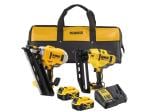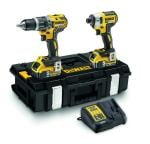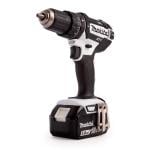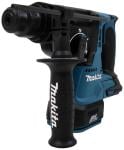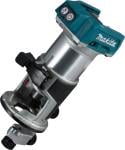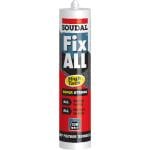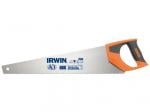Power Saw Buying Guide
Introduction
Power saws are critical tools in both professional and personal woodworking, construction, and renovation projects. They offer unmatched efficiency, precision, and versatility. This guide delves into various types of power saws, detailing their uses, features, and what to consider when making a purchase, ensuring that both tradesmen and DIY enthusiasts can find the best tool for their specific needs.Types of Power Saws
- Circular Saws: Essential for quick, straight cuts in materials like wood, metal, and plastic. They are versatile and can be guided along a straight edge for precision. Ideal for both rough framing and fine woodworking.
- Jigsaws: Unparalleled in cutting curves and intricate shapes. With various blade options, they can handle wood, metal, plastic, and even ceramic tile. They're perfect for crafting custom shapes and designs.
- Mitre Saws: These are the go-to saws for making precise angle and bevel cuts, crucial for tasks like crown moulding, picture frames, and window casings. Compound mitre saws add versatility with the ability to tilt the blade for bevel cuts.
- Reciprocating Saws: Known for their robust cutting action. They are the workhorses for demolition tasks, easily cutting through wood, metal, and plastic. Their aggressive action makes them ideal for renovation and remodelling work.
- Table Saws: The cornerstone of any woodworking shop, these saws offer unparalleled precision for straight, long cuts. They are essential for projects requiring repetitive, accurate cuts.
- Band Saws: Unique for their ability to make detailed and irregular cuts. They are excellent for resawing thick wood into thinner pieces and cutting intricate shapes or curves that other saws can't manage.
Key Features to Consider
- Blade Type and Size: The choice of blade directly affects the material and type of cut. For instance, finer teeth are better for smooth cuts in wood, while coarse teeth are suited for rapid, rough cuts.
- Power Output: Measured in Amps for corded and Volts for cordless models. A higher rating indicates more cutting power, essential for tough materials.
- Corded vs. Cordless: Corded saws offer constant power without the need for charging, while cordless saws provide unmatched mobility and ease of use.
- Cutting Depth and Adjustability: Important for versatility, allowing the saw to handle materials of varying thickness.
- Safety Features: Critical for user protection, including blade guards, riving knives, anti-kickback pawls, and safety switches.
- Additional Features: Features like laser guides enhance precision, while dust blowers keep the work area visible. Variable speed controls are vital for handling different materials.
Corded vs. Cordless Comparison
- Power and Performance: Corded saws usually offer more robust and consistent power, important for heavy-duty tasks. Cordless models, while convenient, might not match up in power but are improving with advancements in battery technology.
- Portability and Ease of Use: Cordless saws shine in portability, perfect for job sites without easy access to power outlets. Corded saws, however, can be limiting in terms of mobility.
- Battery Life: A key concern for cordless saws. Modern Lithium-ion batteries offer longer life and quicker charging, but always having a spare battery is recommended.
- Longevity and Durability: Corded saws generally last longer since they don't have battery components that degrade over time.
- Price Implications: Cordless saws tend to be more expensive due to their battery and charging technology, but they offer the advantage of convenience and portability.
Brand and Model Overview
- DeWalt: Known for their rugged durability and reliability. The DeWalt DCS391B circular saw is a popular choice for its power and ergonomics.
- Makita: Offers a balance of performance and precision. The Makita 4329K jigsaw is lauded for its user-friendly design and accuracy.
- Bosch: Renowned for innovation and quality. The Bosch GCM12SD mitre saw is a standout for its precision and smooth cutting action.
Price Range and Budget Options
- Entry-level: Suitable for infrequent use and basic tasks. These saws offer basic functionality without the bells and whistles of higher-end models.
- Mid-range: These saws strike a balance between cost and performance, suitable for regular users who need reliability and efficiency.
- High-end: Designed for professionals, these saws offer top-tier performance, durability, and advanced features. They are investments for those who need their tools to withstand frequent, heavy use.
Pros and Cons of Each Type
- Circular Saws: Versatile and quick but can be less precise than a table or mitre saw. Ideal for rough framing and straight cuts.
- Jigsaws: Excellent for intricate designs but not the best choice for long, straight cuts. Great for artistic or custom woodworking.
- Miter Saws: Provide precision for angled cuts but are limited to shorter lengths. Ideal for trim work and carpentry.
- Reciprocating Saws: Highly versatile for demolition but can be unwieldy for fine work. Best for remodelling and structural teardowns.
- Table Saws: Offer the most precise cuts but are expensive and less portable. Essential for serious woodworking shops.
- Band Saws: Perfect for detailed work but limited in cutting thick, dense materials. Ideal for intricate woodworking and resawing.
Maintenance and Care Tips
- Blade Maintenance: Regular cleaning and sharpening of blades are crucial. Replace blades when they become dull or damaged.
- Alignment and Calibration: Ensure the saw and its components are properly aligned for accurate cuts.
- Lubrication: Regular lubrication of moving parts prevents wear and extends the tool's life.
- Storage: Store power saws in a dry, dust-free environment to prevent rust and damage.
User Reviews and Testimonials
Incorporating real-world experiences from both professionals and hobbyists provides valuable insights. User reviews often highlight aspects like long-term reliability, ease of use, and customer service experiences with different brands and models.Conclusion and Recommendations
The choice of a power saw should be guided by the specific tasks it will be used for. Consider the material types, the precision required, and the frequency of use. Safety features, ease of use, and ergonomic design should also be prioritized to ensure a pleasant and safe working experience.Appendix
- Glossary of Terms: A helpful section for beginners to understand technical terms used in the guide.
- Safety Guidelines: Essential reading on how to operate power saws safely to prevent accidents and injuries.
Power Saw Glossary of Terms
Ampere (Amp): A unit of electric current. In power saws, a higher amperage indicates more power and the ability to cut through tougher materials.
Bevel Cut: A cut made at an angle other than 90 degrees along the thickness of the material. Mitre saws and some circular saws can make bevel cuts.
Blade Guard: A safety feature that covers the blade when it's not in use or when it's in motion, to protect the user from accidental contact with the blade.
Crosscut: A cut that goes across the grain of the wood. Crosscuts are typically made with mitre saws, table saws, and circular saws.
Dust Blower/Extractor: A feature or attachment that helps remove sawdust from the cut line, enhancing visibility and cleanliness.
Horsepower (HP): A unit of power. In power saws, higher horsepower indicates a more powerful motor capable of heavy-duty work.
Kickback: A dangerous occurrence where the saw blade binds and the saw is propelled back towards the user. Proper safety measures and techniques are important to prevent kickbacks.
Miter Cut: A cut made at an angle, typically on the horizontal plane, used for joining pieces at corners. Mitre saws are specifically designed for this type of cut.
Plunge Cut: A cut that begins in the middle of the material, where the blade plunges into the workpiece. Jigsaws and some circular saws can make plunge cuts.
Rip Cut: A cut that goes along with the grain of the wood. Rip cuts are typically longer and made with table saws, band saws, and circular saws.
Stroke Length: In reciprocating saws, this refers to the length of each back-and-forth motion of the blade. Longer stroke lengths result in faster cuts.
Tooth Count: Refers to the number of teeth on a saw blade. A higher tooth count typically results in finer, smoother cuts, while a lower tooth count facilitates faster, rougher cuts.
Variable Speed Control: A feature that allows the user to adjust the speed of the saw blade, providing more control and versatility for different materials and types of cuts.
Volt (V): A unit of electrical potential. In cordless power saws, higher voltage indicates more power, leading to stronger performance and longer battery life.
Watt (W): A unit of power. It is a measure of the rate of energy transfer. In power saws, more watts typically mean more cutting power.
Safety Guidelines for Power Saws
General Safety
Read the Manual: Before using any power saw, thoroughly read and understand the manufacturer's manual for specific safety instructions and operational procedures.
Wear Protective Gear: Always wear safety glasses, hearing protection, and a dust mask. For certain operations, additional protective gear like gloves and face shields might be necessary.
Inspect the Saw: Regularly check the saw for any damage, ensure all guards are in place and functioning, and the blade is sharp and properly installed.
Work Area Safety: Keep your work area clean and well-lit. Avoid working in wet or damp conditions. Remove any loose items or debris from the cutting area.
Operational Safety
Secure Material: Ensure the material being cut is firmly clamped or secured to prevent movement.
Maintain a Safe Distance: Keep hands and fingers at a safe distance from the blade. Use push sticks or push blocks for close work.
Avoid Distractions: Stay focused on the task. Do not operate a power saw when distracted or under the influence of drugs, alcohol, or medication.
Start Slowly: Allow the saw to reach full speed before beginning to cut. Feed the material slowly and steadily without forcing it.
Use Proper Blades: Use the appropriate blade for the material and type of cut. Ensure the blade is suitable for the speed of the saw.
Corded Saw Safety
Manage Cords: Keep power cords away from the cutting path and ensure they are not tangled or creating a trip hazard.
Cordless Saw Safety
Battery Care: Handle batteries with care. Do not expose them to water or extreme temperatures. Charge them according to the manufacturer’s instructions.
Kickback and Bind Prevention
Understand Kickback: Be aware of situations that might cause kickback, and how to prevent it. Never cut freehand; always use guides and fences where appropriate.
Release Cuts Properly: Understand how to properly release a cut to avoid binding, which can cause kickback.
Post-Use and Maintenance
Power Down: After use, turn off the saw and wait for the blade to completely stop before setting it down.
Regular Maintenance: Keep the saw clean and properly maintained. Regularly check for dull blades, loose components, and other potential hazards.
Emergency Preparedness
Know First Aid: Be prepared with basic first aid knowledge and keep a first aid kit nearby in case of an accident.
Emergency Stop: Familiarize yourself with the saw’s emergency stop features and how to quickly power down in case of an emergency.


